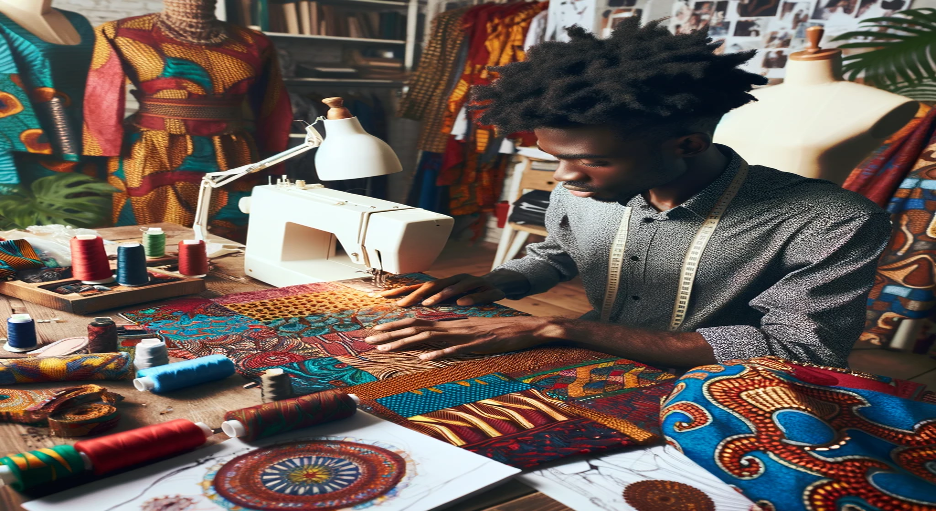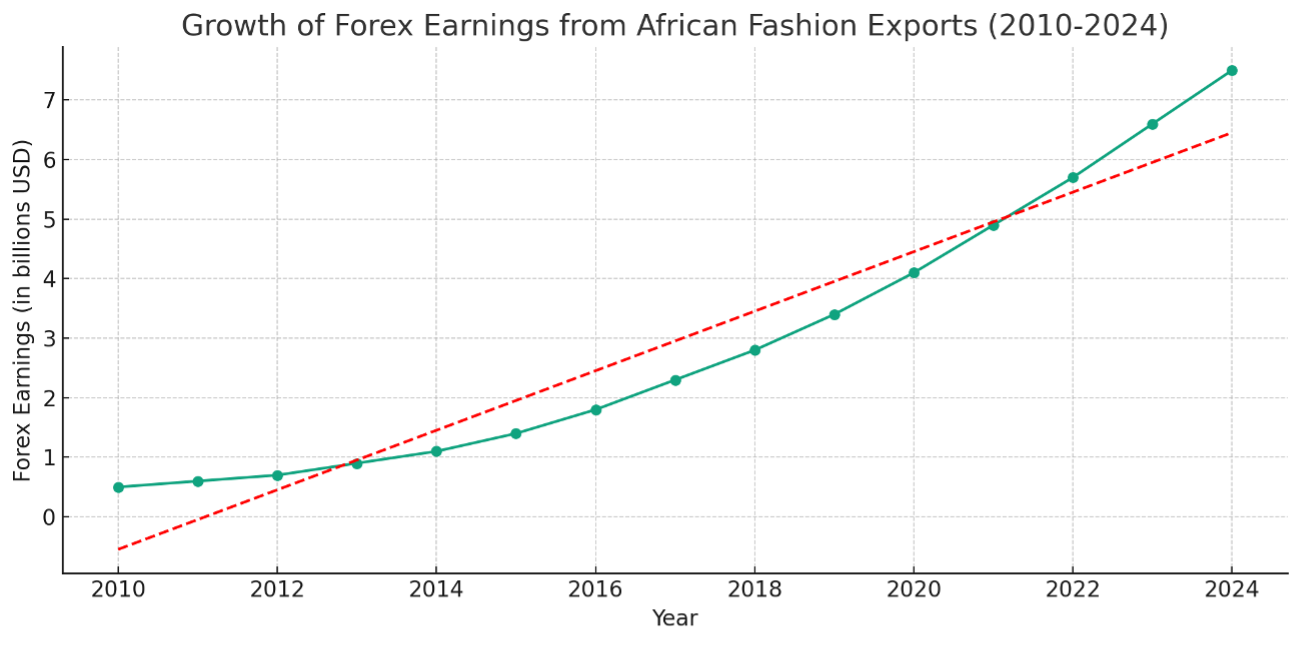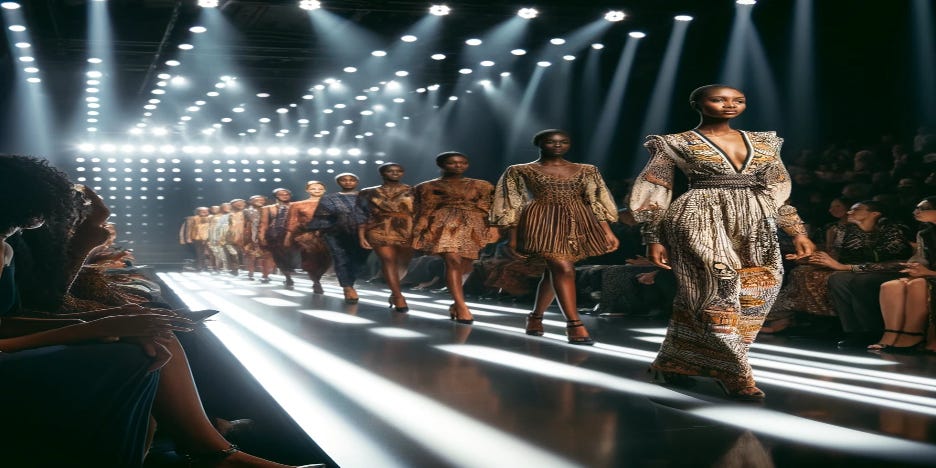Understanding How African Fashion Affects Forex Markets
Introduction:
The African fashion industry is a vibrant tapestry of cultural heritage and contemporary innovation. It is pivotal in the continent's economic landscape and a colorful way to showcase its history and creativity. The industry is becoming popular around the world and is having a positive effect on the international currency market. Its influence extends beyond aesthetics, significantly impacting foreign exchange (forex) markets through trade balances, currency valuations, and global investments. As more people appreciate African fabrics and designs, selling them to other countries brings in more money for African economies; understanding this relationship is crucial for policymakers, investors, and stakeholders within the fashion sector.
Foreign Direct Investment (FDI) and Economic Growth:
The burgeoning African fashion scene has attracted significant foreign direct investment. International brands and investors are partnering with local designers, establishing manufacturing units, and investing in retail infrastructure. These investments create jobs, transfer technology, and develop skills, bolstering economic growth and stabilizing local currencies.
More and more people worldwide like African fashion, such as Kente, Ankara, and Kitenge fabrics. This has increased the demand for these things, causing more of them to be sold to other countries. This brings in more foreign money, which helps African countries improve their financial position globally.
Export Dynamics and Forex Inflows
African fashion, encompassing textiles, apparel, and accessories, has seen a surge in global demand. This rise is attributed to African designers' unique designs and sustainable practices. As a result, exports have increased, increasing foreign currency inflows. For instance, Nigeria's fashion market is projected to reach $1.31 billion by 2023, with an expected annual growth rate of 10.03% between 2023 and 2027.
African designers and fashion houses are at the forefront of this economic transformation. By exporting their designs worldwide, they earn foreign exchange and promote cultural exchange and global appreciation for African artistry. Each piece of clothing sold internationally helps increase their foreign money, showing how cultural exports can help stabilize the economy. These export activities enhance the trade balance, strengthening local currencies against significant counterparts. A favorable trade balance can increase currency appreciation, making imports cheaper and potentially reducing inflationary pressures.
Here's a graph illustrating the fictional growth of Forex earnings from African fashion exports. The trend line suggests a steady increase, reflecting a positive outlook for the industry. Please note that the data used is hypothetical and for illustrative purposes only.
Empowering Local Economies:
The ripple effects of the fashion industry's success are felt across local economies. From cotton farming to garment manufacturing, production employs millions, providing livelihoods and uplifting communities. Moreover, exporting these goods is crucial in balancing trade deficits and stabilizing the local currency against foreign counterparts.
Conversely, the influx of imported second-hand clothing and fast fashion poses challenges. These imports often undercut local producers, leading to trade imbalances and downward pressure on regional currencies. For example, Kenya imported 177,386 tonnes of used clothing in 2022, a significant increase from 2013.
Some African countries have implemented tariffs and trade restrictions to counteract these effects. South Africa, for instance, introduced a 45% import duty on all imported clothing items to level the playing field for local retailers.
Challenges and Opportunities:
African fashion has excellent potential but faces challenges as it becomes more important in the Forex market. Problems such as the need for more production capacity, issues with quality control, limited access to financing, competition from cheap imports, and obstacles in international trade can make it difficult for the industry to grow. Addressing these issues requires concerted efforts from governments, industry stakeholders, and global partners to create a conducive environment for growth. However, efforts to improve trade agreements and use sustainable and tech-driven production methods can also provide significant expansion opportunities.
The Role of Policy and Innovation:
African countries' Governments and trade bodies recognize the sector's potential and enact policies to support fashion exports. Additionally, the digital marketplace offers an unprecedented platform for African designers to reach global audiences, further boosting Forex income through online sales.
Fashion as a Vehicle for Sustainable Development:
Beyond its aesthetic appeal, African fashion is a catalyst for sustainable development. The industry's growth contributes to economic diversification, reducing reliance on traditional exports like oil and minerals. This shift towards a more sustainable financial model underscores the strategic importance of the fashion sector in national development agendas.
Tourism and Cultural Exchange
Fashion events such as Lagos Fashion Week and Dakar Fashion Week draw international attention, boosting tourism and generating foreign exchange earnings. These events showcase African creativity and foster cultural exchange, enhancing the continent's global image.
Conclusion:
The African fashion industry influences forex markets through export earnings, import dynamics, FDI, and tourism. With their unique blend of culture and creativity, fashion designers are painting the Forex markets in vibrant hues of economic progress. As the world continues to embrace African artistry, the continent's fashion industry is set to play an even more significant role in shaping economic landscapes, proving that culture and commerce can go hand in hand, contribute to financial stability and growth across the continent by harnessing its complete potential Development





